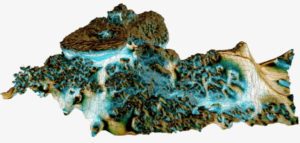3D printed ‘coral prosthetics’ could save Great Barrier Reef
Researchers at the University of Sydney are using 3D printing to create “coral prosthetics,” artificial structures that can support unhealthy sections of the Great Barrier Reef. Overheated and acidic seawater has damaged and bleached large sections of the huge coral reef system.
 The Great Barrier Reef is one of the southern hemisphere’s most incredible sights. Visible from outer space, the coral reef system is the world’s largest single structure made by living organisms, and stretches over 1,400 miles.
The Great Barrier Reef is one of the southern hemisphere’s most incredible sights. Visible from outer space, the coral reef system is the world’s largest single structure made by living organisms, and stretches over 1,400 miles.
That could all change, however, because the Great Barrier Reef is under threat like never before. Researchers say that rising water temperatures, pollution-caused acidification, and more frequent storms have caused coral bleaching—the loss of endosymbiotic algae from the coral—to be more widespread than ever before, especially in Northern sections of the reef.
Fortunately, scientists are doing all they can to fight the effects of coral bleaching using every tool available to them—3D printers included. Dr. Renate Ferrari and associate professor Will Figueira of the University of Sydney are currently using virtual 3D modelling and 3D printing to assess the state of the reef and create coral-mimicking 3D printed structures that can be used to support it.
Dr. Ferrari and Figueira have developed something they call the “Ecological 3D Modelling Hub,” a virtual 3D map that can be used to monitor and measure the Great Barrier Reef and identify where environmental changes are having the biggest negative impact. Images for this unique map were obtained using photogrammetry 3D scanning techniques, and the accuracy of the visual information lets the researchers carry out important preservation work.
That preservation work includes making 3D printed artificial sections of coral which could act as a habitat for fish (which eat coral-killing algae) and a structure for coral to grow on. Previously, cinder blocks or deliberately sunk ships had been used as artificial reefs, but these 3D printed versions are much more like a natural reef structure.
 “You’re providing the exact same structure that an actual natural reef provides, because we got the models from the reefs before they bleached,” Ferrari told The Guardian. “We are literally replicating it.”
“You’re providing the exact same structure that an actual natural reef provides, because we got the models from the reefs before they bleached,” Ferrari told The Guardian. “We are literally replicating it.”
Other researchers, like Australian architect James Gardiner, have also attempted to make 3D printed coral structures to support the Great Barrier Reef, but Dr. Ferrari and Figueira’s research is unique in its use of 3D scanning and 3D mapping technology to identify parts of the system most in need of support.
The 3D printed coral prosthetics have already been tested in water, but the Sydney researchers are now looking to scale up their project. To implement their 3D printed coral on a large scale, they estimate that they’ll need around 150,000 AUD, an investment they think is well worth making.
Crucially, the researchers are more optimistic about the Great Barrier Reef’s chances of survival than some other researchers, who say that the effects of climate change have caused unalterable damage to the once-spectacular organic system.
“Coral reefs have been around for hundreds and hundreds of years,” Ferrari says. “Because of the connectivity of the Great Barrier Reef, this type of approach will still work. You put the reefs down and the coral larvae will arrive from other parts of the reef.”
The researchers believe that, as long as the world’s governing bodies meet their goals on climate change, the Great Barrier Reef can build on the healthiness of its southern section to restore some of the former glory to its largely bleached northern section.
If 3D printing could help that restoration come about, it would be a huge victory for environmentalists everywhere.
Source: 3ders.org










